Garmin Rally power meter pedals review
Garmin's power meter family lets you swap one spindle between pedal bodies, maintaining consistent data across all disciplines. At a cost.
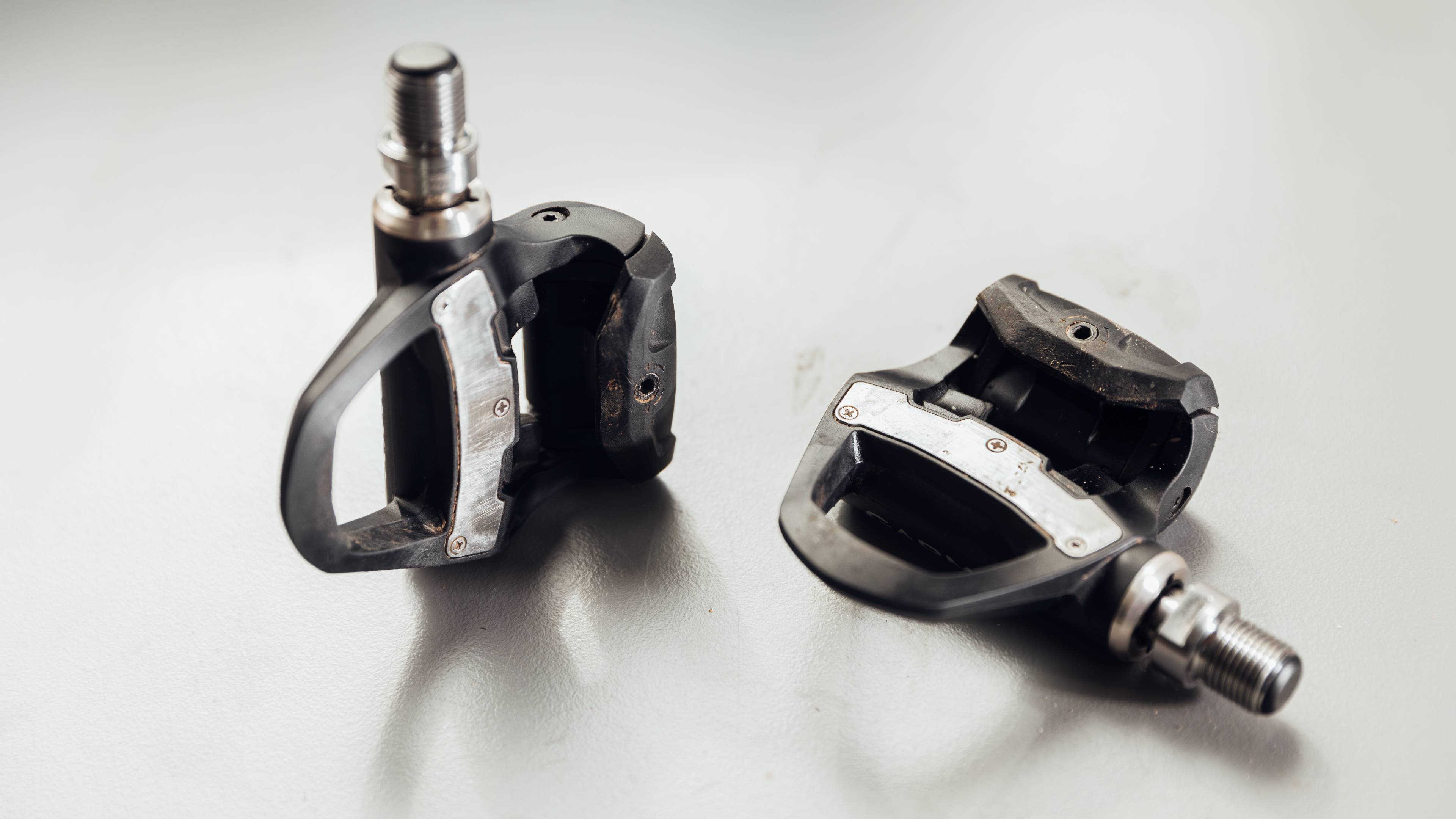
The Rally family carries over everything we loved about the Vector 3s, and nothing we didn’t. The unique selling point is the ability to swap the spindles between road and off-road riding, but buyers should be aware that this is not a quick pre-ride job and nor is it the most cost-effective solution.
-
+
Reliable
-
+
Weather-resistant
-
+
Aesthetics
-
-
Expensive
-
-
Most multi-discipline riders change bikes more often than it is practical to change spindles
You can trust Cycling Weekly.

Garmin’s Rally power meter pedals aim to be the very first to provide true cross-compatibility for riders of varying disciplines - with a single spindle that can be swapped between RS (Shimano), RK (Look) and XC (Shimano SPD) style pedals. The goal is to provide reliable data on any bike the owner chooses to ride.
The Rally family unseats Garmin’s Vector, the third version of which was launched with a battery door cover that was the source of frustration for many a user, myself included. However, as well as the new system agnostic pedal bodies, the Rally features a redesign that appears to have been victorious in the battle for reliability once and for all.
Garmin Rally RK200: construction
The body of the Rally RK looks identical to the Look-compatible Vector 3 before it - which is pretty slick for a power meter pedal. Other versions in the market - the Favero Assioma and Powertap Quarq P2 - don’t look nearly so unobtrusive.
The pedals are fitted and removed with a 15mm spanner, and take either four LR44/SR44 or two CR1/3N batteries. Changing batteries is as simple as using a 4mm Allen key to loosen the door, which now mates with a metal insert, drastically reducing the chance of cross-threading leading to water damage.
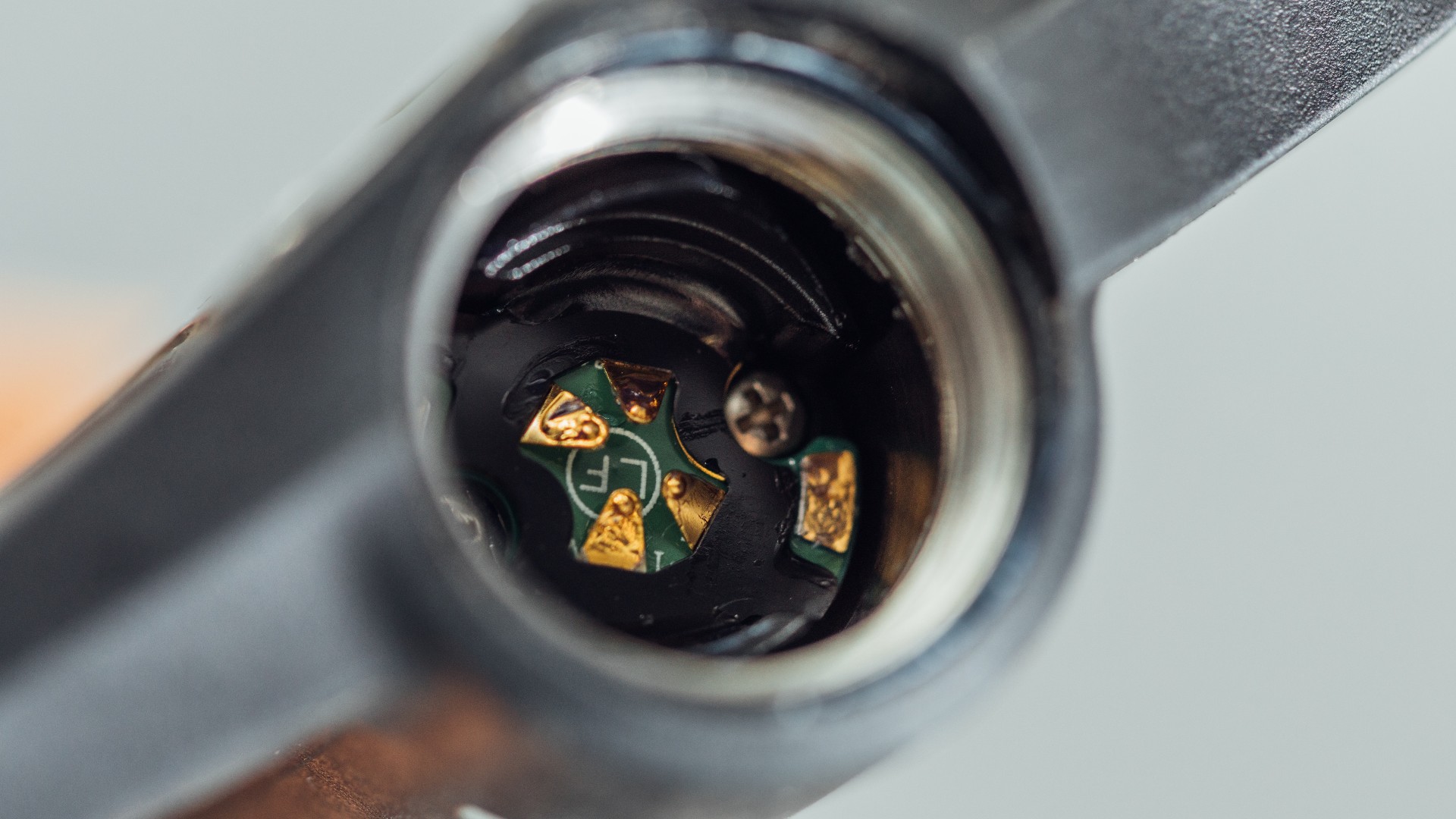
Release tension can be adjusted via a small Alley key adjustment at the rear of the pedal. There’s also a screw that holds the pedal jaw in place, which is tightened up by a 2mm Allen key. Experiences with the Vector 3 lead me to suggest riders check this is snugged up occasionally over long-term use, I did have mine work its way loose but this hasn't repeated itself on the Rally as yet.
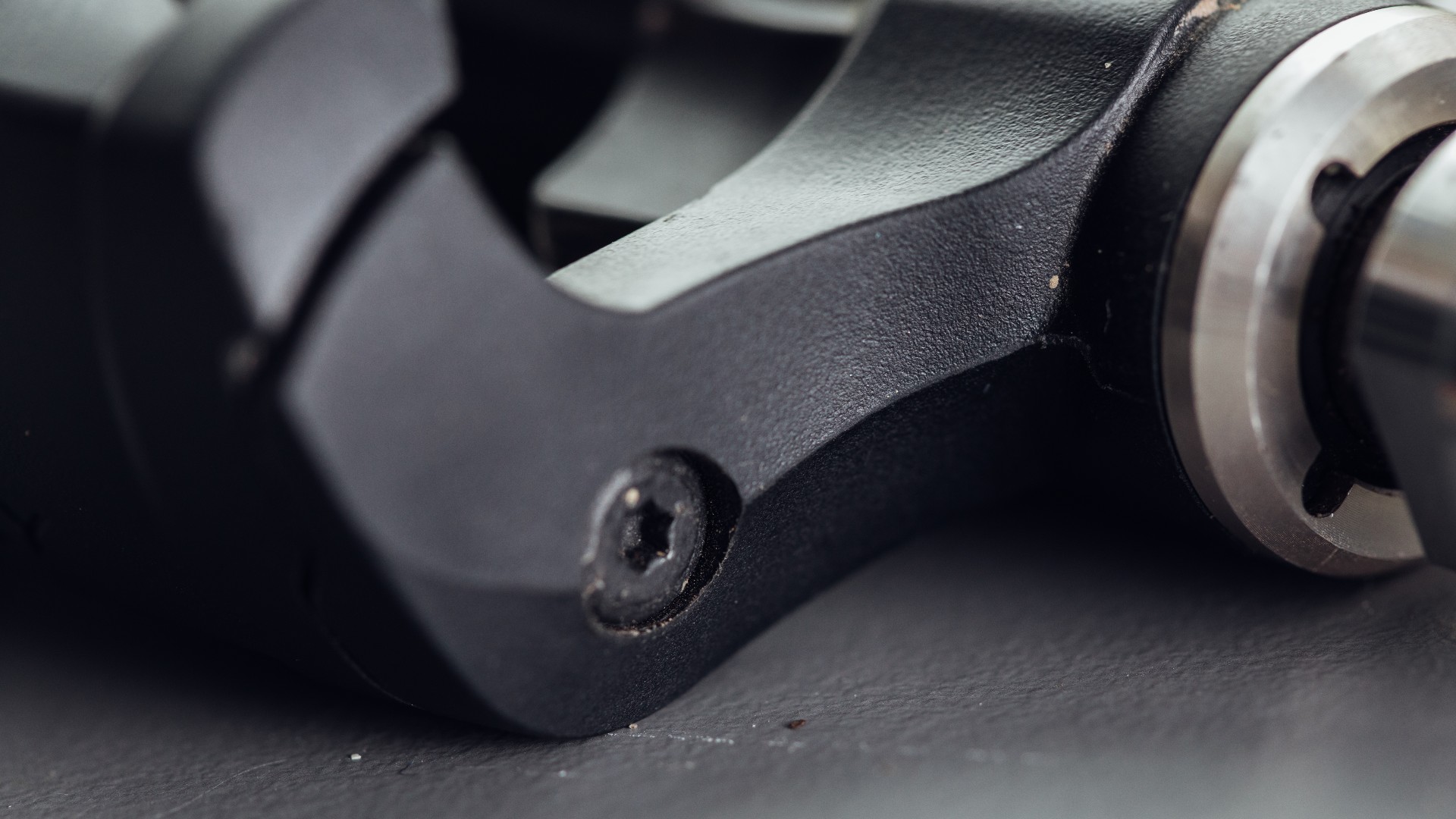
Accuracy is a claimed +/-1 per cent. This refers to the unit's own accuracy to itself - no power meter's accuracy claim is against 'finite power', and studies have shown drift between units is substantial. However, comparison testing showed results very close to that of a Quarq DZero implying good calibration here.
The battery life is a claimed 120 hours. Many factors will influence this, but I got to around 90 hours before receiving a ‘battery low’ message.
The pedals are Bluetooth and ANT+ compatible. The Q-factor is 53mm, or 55mm if you use supplied washers, and the stack height is 12.2mm. The pedals weighed in at 165g and 166g respectively (331g for the pair).
My test pair is the Rally RK200 - which is dual-sided; the RK100 is single-sided and can be upgraded at a later date.
Garmin Rally RK200: swapping spindles
The Rally party trick is that you can swap the spindle between pedals. For example, you might own the Rally RK and Rally XC bodies, giving you the opportunity to use the same strain gauge across all of your rides.
This is of course more hassle than having a power meter on each bike. However, in most cases, it's cheaper, and because there is drift between units, it does remove the need to complete an FTP test on every bike/power meter to ensure that set zones are accurate.
I don’t have a spare pair of pedal bodies to swap between - but I did try removing and replacing the spindle to understand how easy, or otherwise, the process would be.
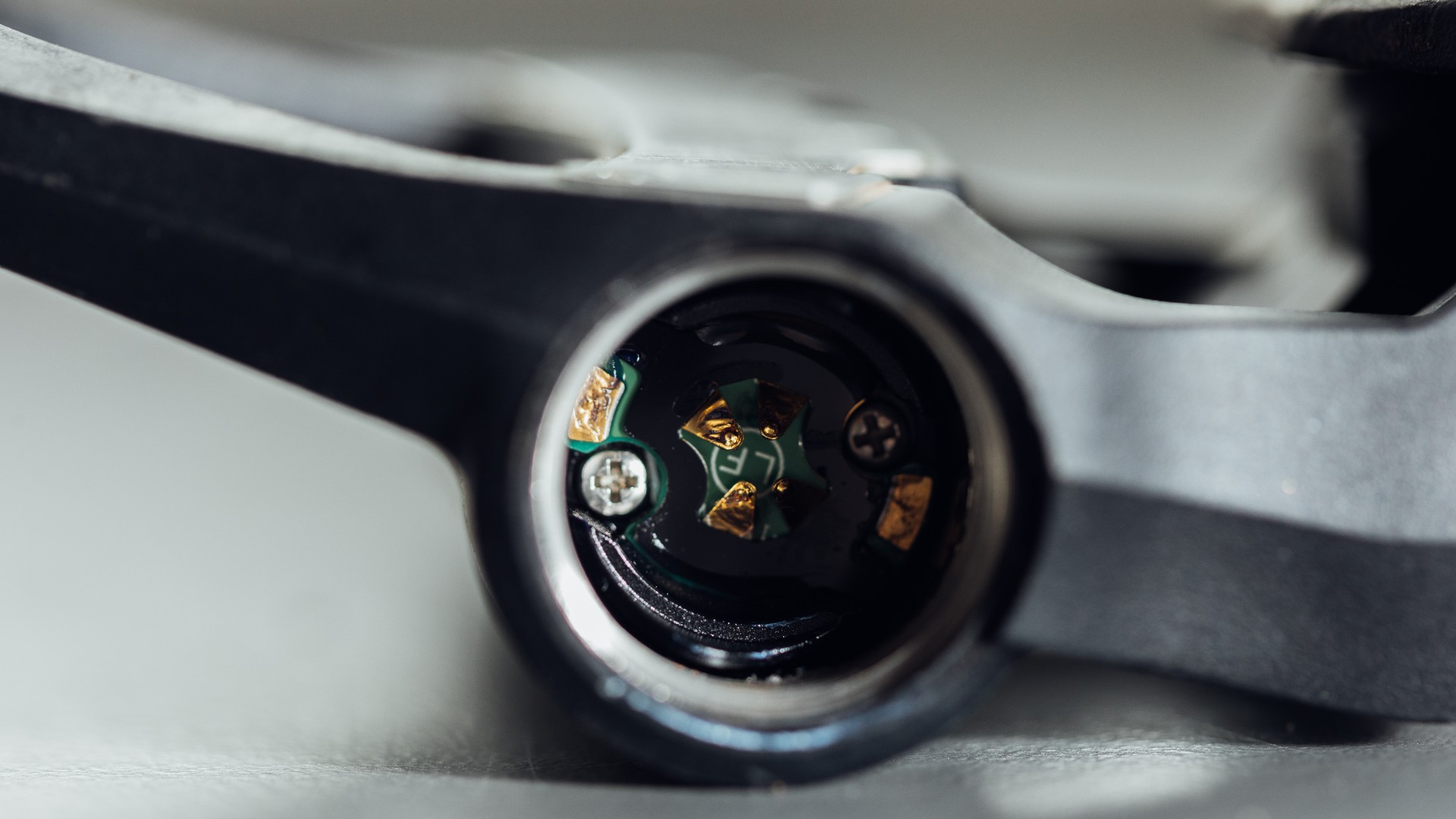
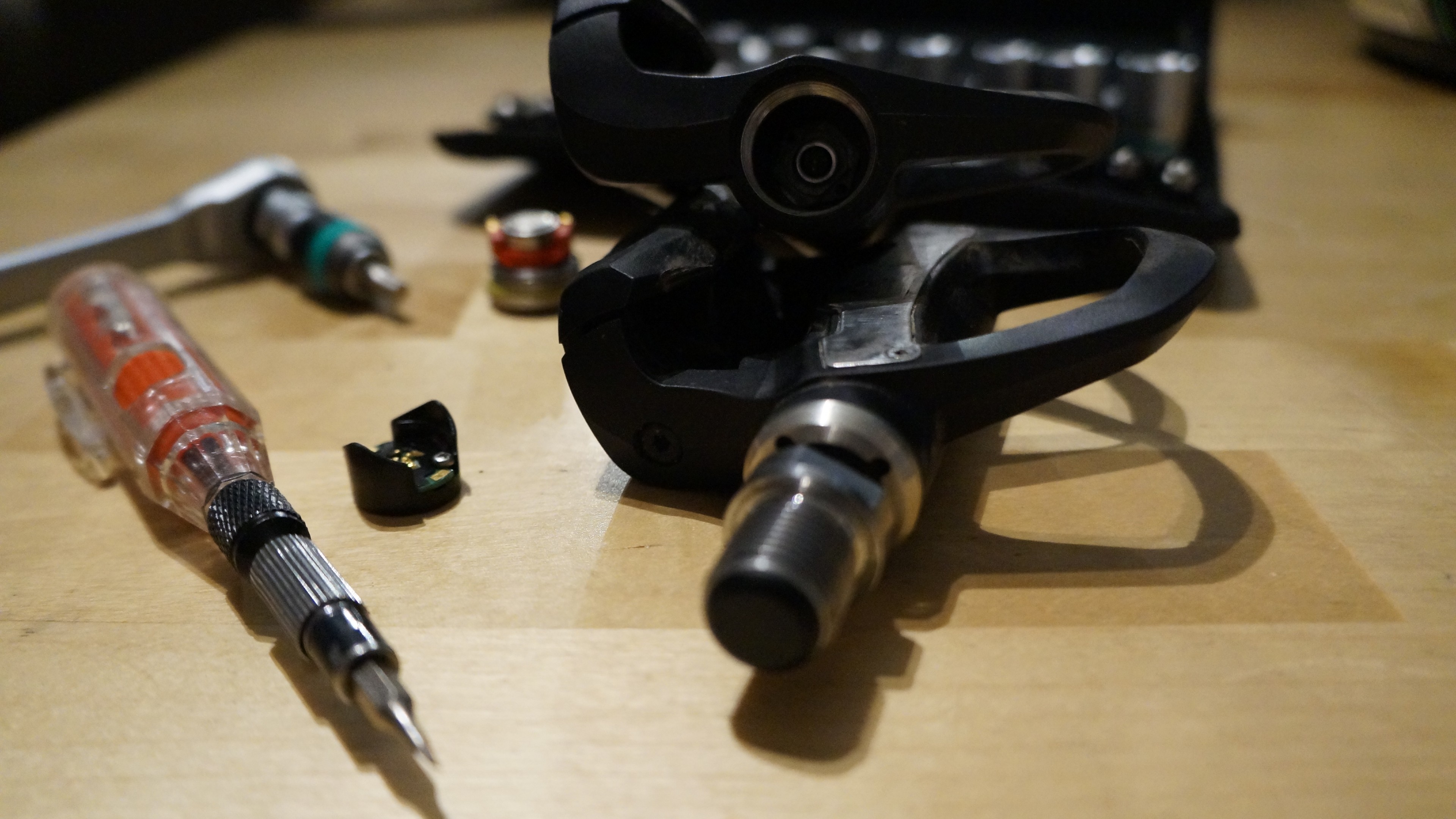
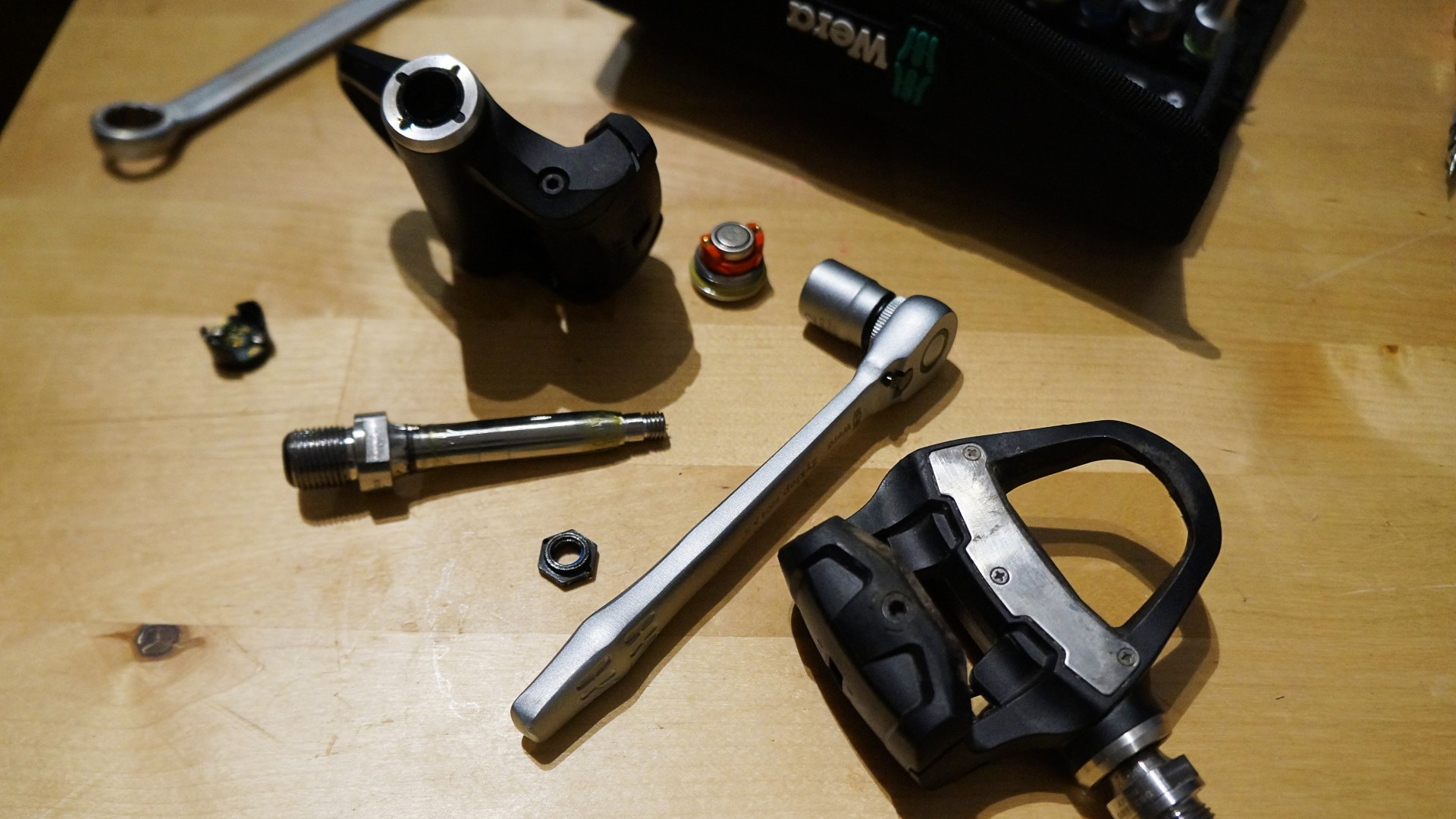
At the Rally launch, Garmin suggested the swap would take “five to 10 minutes, with experience”, adding “we're looking at it more as a seasonal change but we see some riders changing every week if they want to."
The process is much like carrying out a pedal service. I don’t want to write a ‘how to’ here, that’s best left to Garmin’s video.
First time round, it took me 20 minutes. No doubt I'd speed up over time, but it's something you'd want to do the night before a ride and not whilst brewing coffee on the day. There are quite a few small parts, not less the tiny screws that need to be removed. I would wager that the heads of these would not take kindly to a weekly change - seasonal would be a much more sensible interval.
The process involved is somewhat of a fly in the ointment of a very good idea. Many riders who switch between road and gravel or mountain bike riding do so several times a week - I know I do. I wouldn’t repeat this process every time, I'd likely use the pedals for my road racing and training and only for an off-road event or race.
Garmin Rally RK200: the ride
My experience with the Garmin Rally RK200 pedals has been excellent - I’ve enjoyed every positive element of the Garmin Vector 3s, without the pitfalls.
The pedals look just like any pair from Look, and the operational mechanics are similar - the hold on the cleat is firm and can be easily adjusted via the small screw at the rear.
I’ve been using these pedals since late February, through to the end of May - and have racked up 90 hours of riding. The reported battery life of 120 hours may therefore be a little ambitious, as I have performed one change - but I did do so as soon as the ‘battery low’ message arrived. I’ve used the pedals only for my road riding since I don’t have an XC model - but I’ve dragged them through plenty of ill-advised conditions.
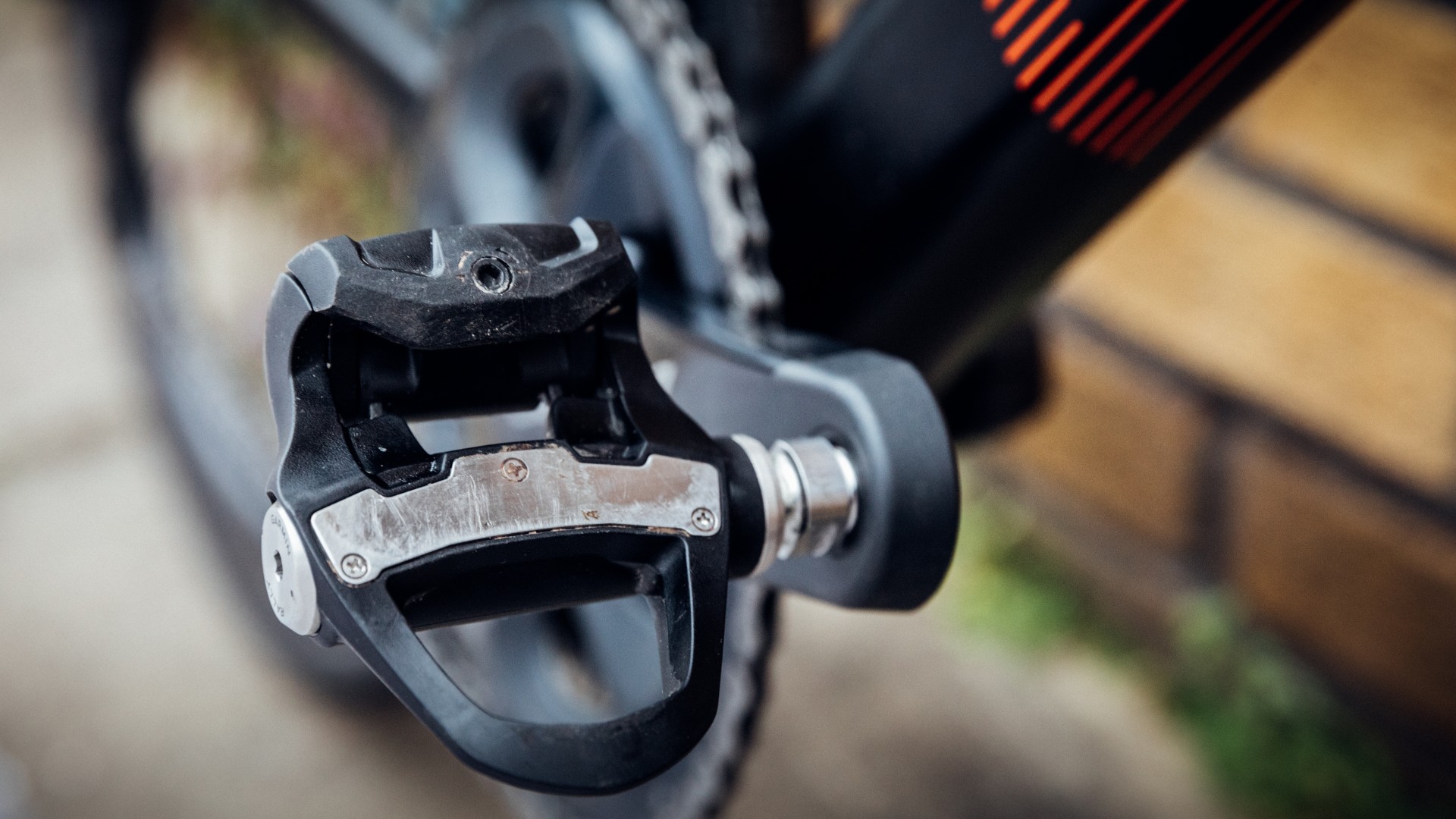
The pedals have been quick to connect to my device in almost all instances, though I am using a friendly bedfellow in the Garmin Edge 1030 and occasionally 530 computers.
I had briefly believed that the Rally pedals might be reading lower than my previous Favero pedals, judging by low power output at an early season time trial. However, it quickly transpired that the underperforming component was me; a few events in and the numbers were back to normal.
When power meter brands provide ‘accuracy’ percentages, such as the +/-1 we have here, they refer to the unit's accuracy to itself - so 200 watts is only ever read as between 198 and 202 watts on that particular unit, so you can trust that your zones are correct on any day of the week.
The fact that no manufacturer's claims relate to 'finite power' means that, arguably, comparing one unit to another is actually fairly futile unless you're collecting a lot of data for a major study. However, it is interesting to keep a check on how great the drift could be between units, so I did it anyway.
I chose my ‘descending recovery sweetspot intervals’ session as the comparison mining site, and I was pretty impressed to find that the Rally pedals provided extremely similar readings to the Quarq DZero fitted to a SRAM Red eTap bike I also have on test.
To be honest, the 1-2 watt differences could easily be put down to the fact that it's near impossible to press 'lap' on two computers simultaneously whilst on the rollers.
| Lap | Quarq | Rally |
| 1 - warm up | 115 | 115 |
| 2 - sweetspot | 223 | 221 |
| 3 - recovery | 141 | 141 |
| 4 - sweetspot | 224 | 222 |
| 5 - recovery | 129 | 131 |
| 6 - sweetspot | 220 | 222 |
| 7 - recovery | 131 | 136 |
| 8 - sweetspot | 221 | 224 |
| 11 - cool down | 126 | 129 |
Just like the Vector 3 before it, the Rally pedals provide a range of additional data points, such as left/right balance, pedal smoothness, power phase, platform offset and information on how much time you spend seated or standing.
Personally, the only data point I regularly use of left/right balance - if this begins to skew outside of 48/52 it generally tells me I’m about to develop some back pain and need to book in with my friendly osteopath.
Platform offset is only really useful in conjunction with bike fitting tools, and pedal smoothness/power phase/time seated or standing are metrics you might use if you had a particular process goal in mind. The pedals collect and display all the data, anyhow, so if you want it you can be sure it’ll be there.
Garmin Rally RK200: value and conclusions
Garmin’s Rally RK/RS200 pedals cost £969.99, the XC model is steeper still at £1059.99 and if you want to make the most of the swapping functionality, you’ll want a set of pedal bodies at £179.99 for the RS/RK or £219.99 for the XC - that brings you to £1189.98 if you’d like an RS pair and XC bodies.
Comparatively, the Favero Assioma pedals come in at £699 - and our experience has shown that they’re extremely reliable and easy to live with, thanks to the rechargeable battery.
The only thing that the Garmin Rally provides which the Favero doesn't is the RS/Shimano style pedal system which has so far evaded the power meter world, and the off-road compatibility.
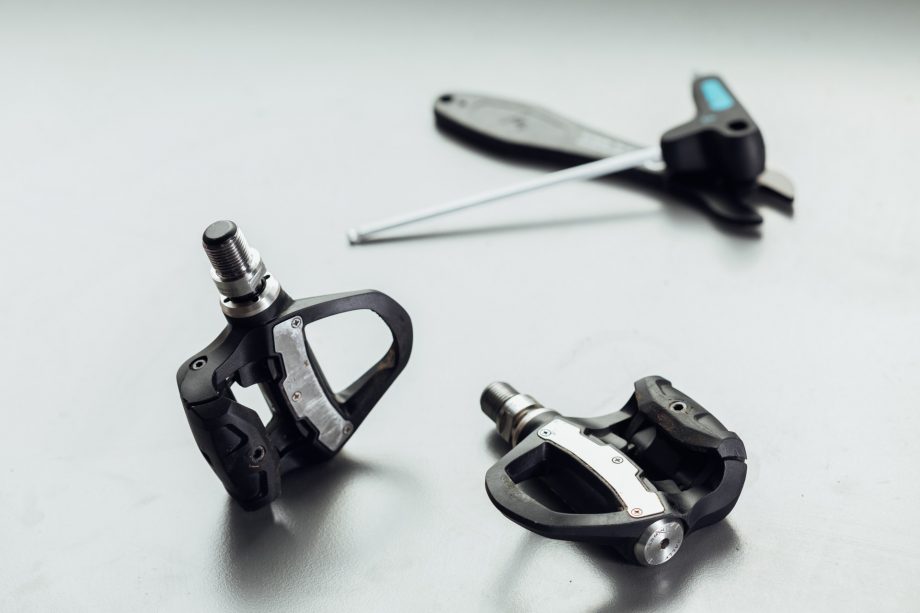
The benefit of power meter pedals has always been most felt by those who own multiple bikes. But emerging alternatives mean the pedal is no longer necessarily the most cost-effective option. SRAM’s new Rival groupset, for example, lets you add a single sided crank arm power meter for an additional £230 - so SRAM users could fit out five bikes for the price of one set of Rally pedals and additional bodies.
In short - Garmin’s Rally pedals have proved to be reliable and accurate. They look great and don’t add much to the weight of the bike. They are however expensive. For some riders, the ability to use the same power meter across all bikes and disciplines will justify the cost, if that's not you, there are plenty of other good options out there.
Garmin Rally specification
- RRP: £969.99
- Weight: 331g per pair
- RK200 - dual sided, also available as RK100, RS200/100 and XC200/100
- Bluetooth and Ant+ enabled
- Claimed battery life: 120 hrs, ~100 hours on test
- Q Factor 53mm/55mm with washers
- Stack height 12.2mm
- Claimed accuracy +/-1%

Thank you for reading 20 articles this month* Join now for unlimited access
Enjoy your first month for just £1 / $1 / €1
*Read 5 free articles per month without a subscription

Join now for unlimited access
Try first month for just £1 / $1 / €1
Get The Leadout Newsletter
The latest race content, interviews, features, reviews and expert buying guides, direct to your inbox!
Michelle Arthurs-Brennan the Editor of Cycling Weekly website. An NCTJ qualified traditional journalist by trade, Michelle began her career working for local newspapers. She's worked within the cycling industry since 2012, and joined the Cycling Weekly team in 2017, having previously been Editor at Total Women's Cycling. Prior to welcoming her first daughter in 2022, Michelle raced on the road, track, and in time trials, and still rides as much as she can - albeit a fair proportion indoors, for now.
Michelle is on maternity leave from April 2025 until spring 2026.
-
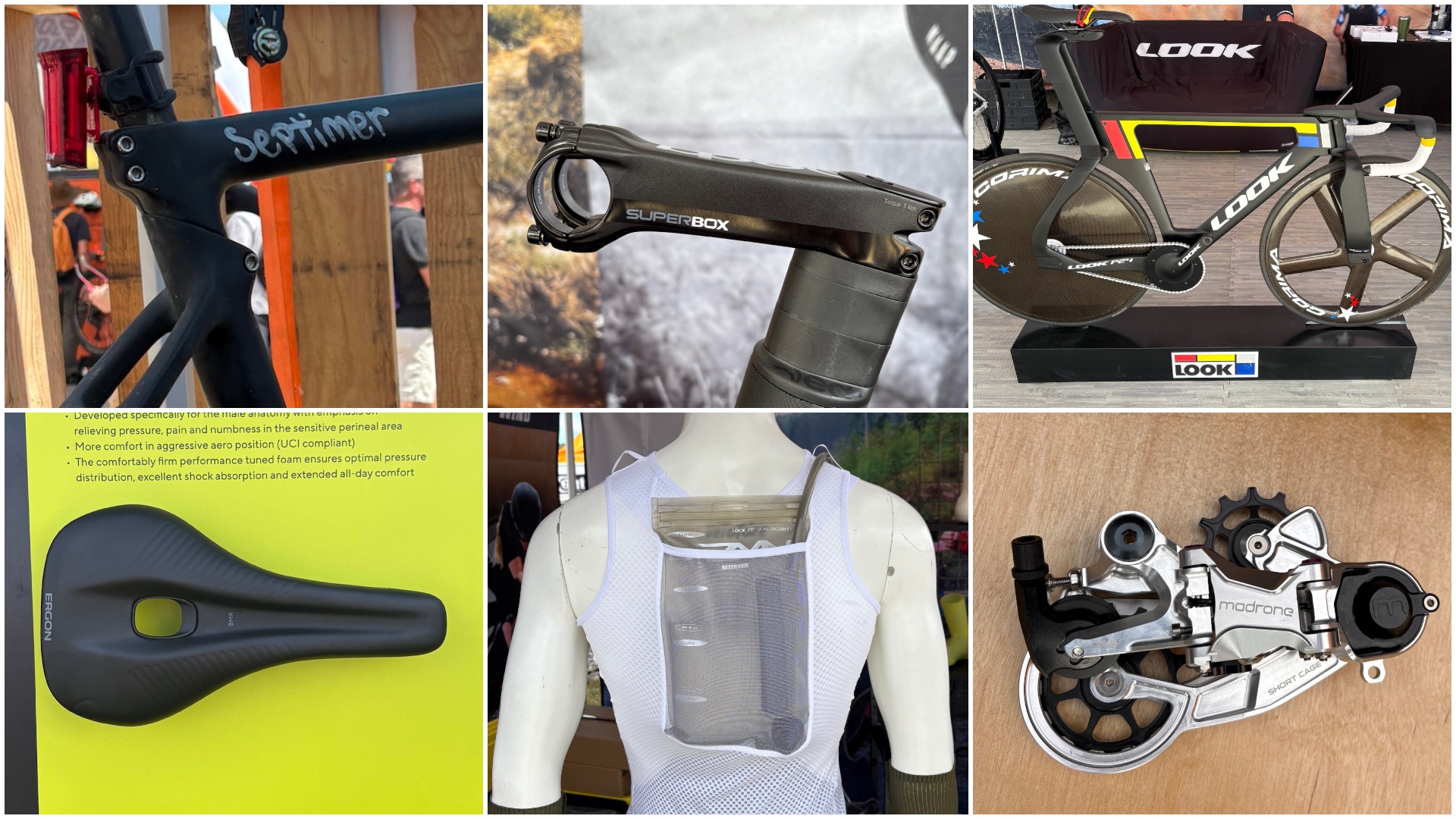 The Sea Otter Classic: sights and sounds from the biggest bike gathering in North America - Part 1
The Sea Otter Classic: sights and sounds from the biggest bike gathering in North America - Part 1Odds and ends that run the gamut, from a $13,000 frameset to armoured kit and new hydro-vests
By Tyler Boucher Published
-
 The thing that bothers me most when I look back at old school training is that right now we’re doing something equivalently misguided
The thing that bothers me most when I look back at old school training is that right now we’re doing something equivalently misguidedOur columnist's old training diaries reveal old-school levels of lunacy
By Michael Hutchinson Published
-
 'This race is absolutely disgusting': Peloton reacts to another brutal Paris-Roubaix Femmes
'This race is absolutely disgusting': Peloton reacts to another brutal Paris-Roubaix FemmesNow in its fifth edition, Paris-Roubaix Femmes is still a tough race, even for the best bike riders in the world
By Adam Becket Published